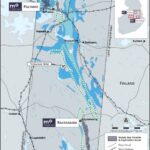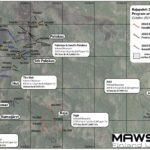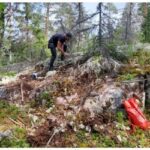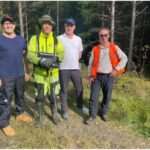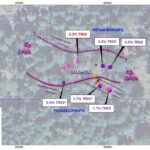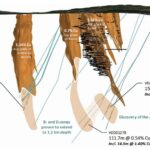In this article, I’ll take a look at one of the Nordic countries that has been somewhat overlooked by the mining industry but may have a golden future ahead. Join me as I explore some of the opportunities Iceland has to offer
Raw Material Industry in Iceland🏭
While industrial minerals are mined in Iceland, the country currently has no active metal mines. It is, however, an important country when it comes to aluminum smelting. Due to its abundant and well-established renewable energy sector (70% hydro, 30% geothermal), Iceland is, despite being far away from the world’s bauxite deposits, an attractive location for the big smelting companies and their energy-intensive operations. Together, the island’s three smelters (Straumsvik – Rio Tinto Alcan; Fjarðaál – Alcoa; Grundartangi – Century Aluminium Corp. ) produce almost one million tons of refined aluminum each year, forming an important pillar of the nation’s export industry.
When it comes to metal mining and mineral exploration in Iceland, there hasn’t been much going on historically besides a long-lasting but small-scale episode of sulfur mining and temporary exploitation of the country’s lignite deposits. Mining of sulfur started during the Middle Ages with a peak during the gunpowder craze in the Renaissance but faded into obscurity when larger deposits were discovered in less remote places. Although never a great business, mining of the country’s lignite seams during the world wars in the 20th century helped the island’s inhabitants heat their homes when coal supplies from the continent were limited due to strained and threatened supply lines in the North Atlantic.
Perhaps the most interesting episode is a short-lived gold rush and mining period at the beginning of the 20th century. Thanks to the return of Icelanders who took part in the gold rush in North America, gold was discovered not far from Reykjavik at a prospect called Thormodsdalur in 1908. Over the following years, the project was repeatedly explored and mined before being seemingly forgotten during the turbulent period of the world wars and associated economic recessions.
As we soon shall see, the island’s forgotten gold mining episode is currently undergoing a revival, hopefully resulting in the opening of the country’s first metal mine in over a century.
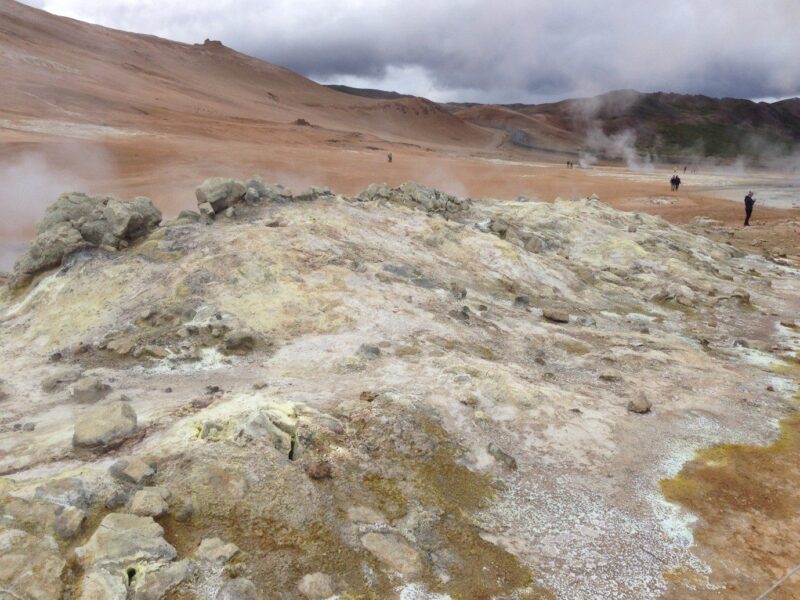
Geology of Iceland⛏️⛰️
Compared to some of the ancient bedrock in Fennoscandia and Greenland dating back billions of years, Iceland is composed of a rather young geological terrain that only started to emerge above the waves some 16 million years ago.
The island’s formation is ultimately linked to the breakup of Pangaea (an ancient supercontinent), which resulted in the formation of a new divergent plate boundary and associated mid-ocean ridges in the Atlantic Ocean. Iceland is rather unique as it’s the only place in the world where such a ridge rises to the surface. This special setting appears to be related to a mantle plume that is at present located directly underneath the island, pushing the newly formed oceanic crust to the surface and ultimately driving parts of the country’s volcanic and geothermal activity.
The map below highlights the plate boundary that runs in northeast-southwest direction through the center of the island, essentially separating it into a North American and Eurasian part. Not surprisingly, this area is the volcanically most active part of the island with the latest eruption occurring only a few days ago.

As every lava flow is constantly replaced by younger ones, and the drift of the plates pushes the newly formed rocks away from the rift, the country’s oldest rocks can be found at its northwestern and southeastern coasts. Due to their relatively older age, erosion has exposed deeper crustal levels in these areas. As we soon shall see, this has important implications for mineral exploration in the country.
Due to its volcanic origin around 90% of the island’s bedrock is made up of basalt. However, there are also small volumes of felsic volcanic and sedimentary rocks to be found. The latter hosts the abovementioned lignite seams, representing periods of a warmer climate and denser vegetation.

Exploration Potential📈
Despite the known occurrence of gold at Thormodsdalur, the country has long been regarded as non-prospective from an exploration point of view due to its young geological terrain and Mid Oceanic Ridge association. As a general rule, most mineral deposits are associated with destructive plate margins and not constructive ones.
Gold💰
What appears to have renewed interest is the scientific advance in the understanding of epithermal gold depots in other parts of the world in the last decades of the 20th century. As these deposits are directly linked to volcanism, it doesn’t take a rocket scientist to look for them in one of the volcanically most active places on earth. Realizing that Thor might be only one of many epithermal systems on the island, exploration activities picked up again in the 90’s. Following large-scale prospecting and stream sediment sampling campaigns by government entities and private companies (apparently, even Teck made it to the island), the country today boasts multiple known occurrences of anomalous gold, in addition to the bonanza grades seen at Thormodsdalur and several other prospects. As you can see on the map below, most of the gold has been discovered in the oldest rocks on the island’s margins. In addition to these areas not constantly being covered by younger lava flows, thereby obstructing exploration, the prevalent discovery of gold in this area can be explained by the deeper erosion levels exposing the more enriched, lower parts of the epithermal systems.
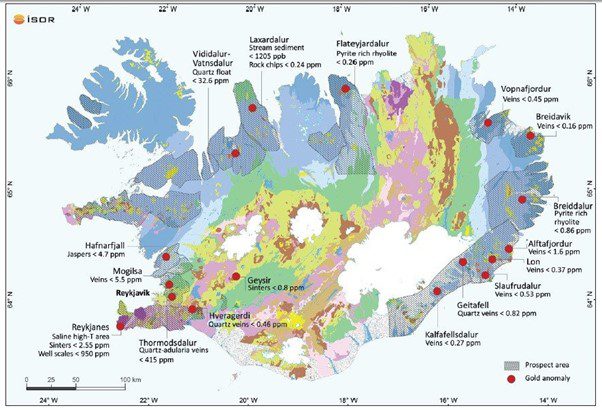
Moving into my favorite realm of speculation I was wondering what other commodities might be found in Iceland that haven’t yet been considered.
Got Copper? 🔶
When you google the worldwide distribution of SMS deposits (modern seafloor massive sulfide deposits) you can see them following the mid-ocean ridges like a string of pearls. Upon examining these maps, it appears that some hydrothermal fields occur along the ridge just north of Iceland. While I would not expect Iceland to make a move like Norway and open its continental shelf/exclusive economic zone for potential mining activities before the International Seabed Authority comes out with a global mining code, I have been wondering if we shouldn’t consider ancient variants of these deposits to occur onshore in some of the islands older terrains? If some of the older rocks at the island margin, now exposed by erosion, represent subaqueous volcanics, there might be a certain chance?
Got Hydrogen? H2
Following my latest article on geological hydrogen, I couldn’t help but wonder what’s happening on this exploration frontier in Iceland. Located on an active volcanic system, with bedrock consisting of more than 90% of basalt and coupled with a well-developed geothermal industry, the island appears to be one of the prime spots to explore for this commodity. However, while the Nordic nation seems to be quite bullish on the build-out of its green hydrogen industry (which makes more sense here than in other parts of the world due to the island’s abundant electricity supply) little seems to have happened on the geological hydrogen front. That said, it appears that at least one of the local geothermal energy companies (ON Power -Hellisheiði Geothermal Power Plant) is harnessing some of the hydrogen degassing from its operation and turning it into fuel – albeit in low quantities. Quite an interesting story in itself.
Mineral Exploration in Iceland – Iceland Resources📈
As of now, there is only one company actively exploring in the country – Iceland Resources. The company is owned by CNSX-listed St-Georges Eco Mining (SX), but plans are underway to spin out the Icelandic assets into a separate entity. The company is actively seeking ways to advance the projects through a variety of options and would welcome interested parties to reach out.
In addition to controlling the rights to Thormodsalur, several earlier stage projects, and some interesting investments, the company has access to a large database and a local team, positioning itself ideally to thoroughly explore the island.
So what’s the deal with Thor, the company’s flagship project? The project is located only 20 km outside Reykjavik and forms part of a large 50 000ha-license, covering the prospective ground in the area. As mentioned previously, the prospect was discovered as early as 1908 and is by far Iceland’s most advanced gold project. According to old records, the deposit was mined for several years, starting in 1908, first by a Finnish company and later by a German company ending in 1922. While no records on the grade and tonnage appear to exist, some interesting grades can be inferred, as the operations produced direct shipping ore – something that could potentially be repeated in the future.
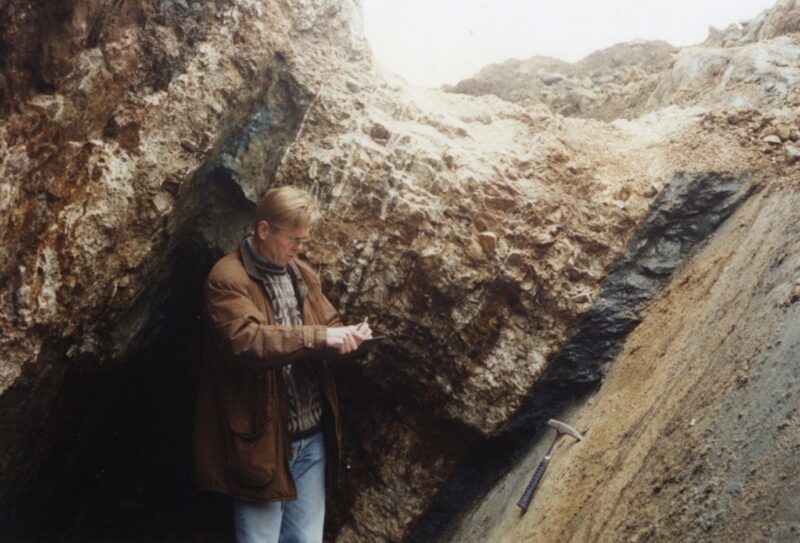
In 1998 the Thor vein was opened to expose the old workings and true nature of the vein (see photos above). The vein was “mined” for crushed stone which was used by the University at Reykjavik to clad its walls at one of the buildings on campus (See photos below).
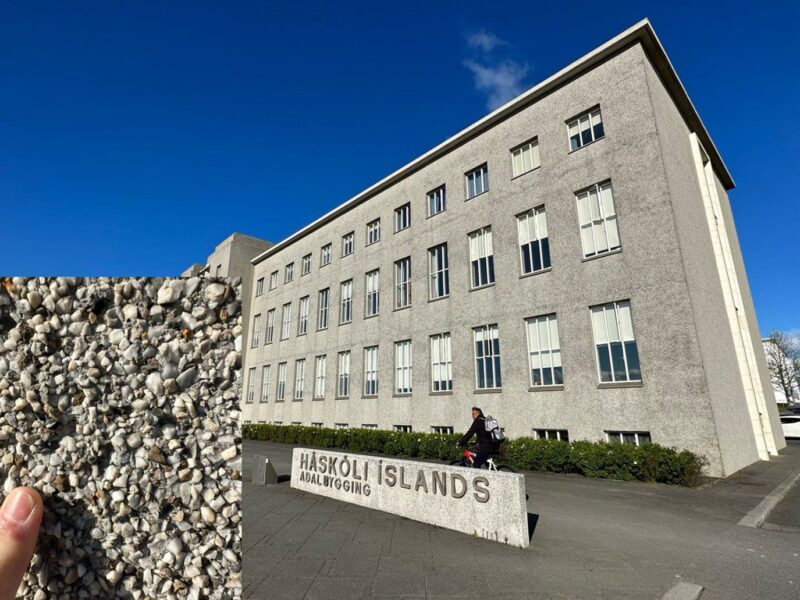
As for most of the country, the geology at Thor is dominated by basalts, with the gold being hosted in a 1-5m-wide alternating sequence of banded quartz veins (see picture below) and clay-sand zones.
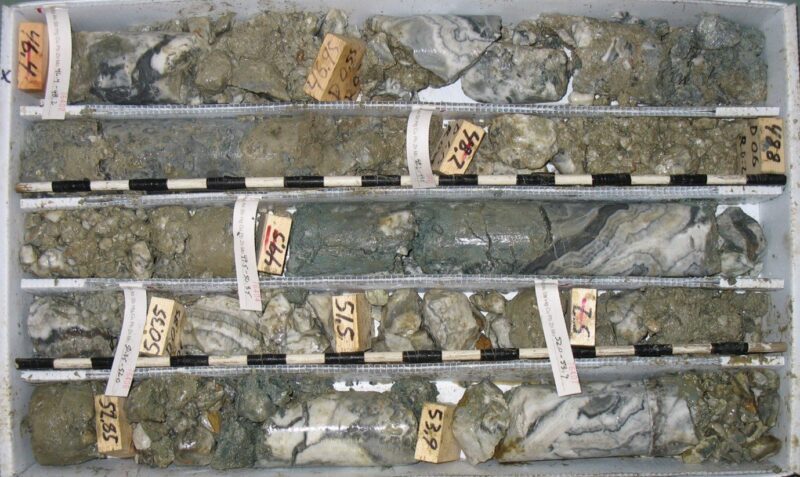
The clay and sand zones are inferred to represent remnants of altered basalt and have been shown to be mineralized as well. The alternating sequence of quartz, clay, and sand has, however, caused significant recovery issues in all the historic drilling campaigns. To date, the project has seen 52, mostly shallow drill holes for around 4,500m, confirming the mineralization over more than 500m with the vein remaining open along strike and at depth. Most of the drill holes have encountered gold mineralization with the highest grades reaching 415g/t Au and the best intercept reported to date returning 11m @ 11.3g/t Au.
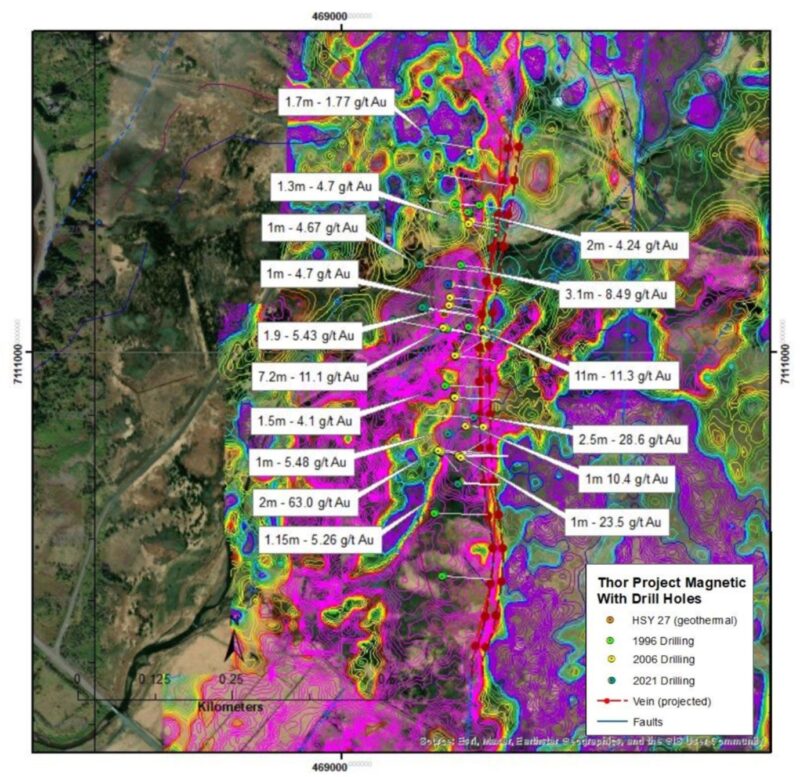
Due to the core recovery issues it’s important to note that trenching in the 90s confirmed high-grade mineralization over several meters at multiple locations. Interestingly, a geothermal hole drilled in the same period intersected multiple zones of gold mineralization down to a vertical depth of 450m, underlining the potential for multiple mineralized zones in addition to the original vein.
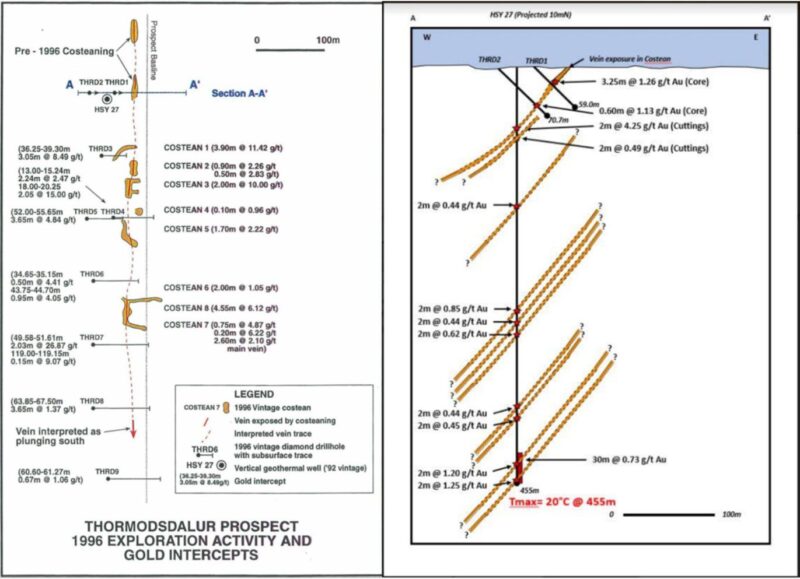
Elbow Creek Prospect
One of the company’s earlier stage projects is the Elbow Creek prospect, located in the northwestern part of the island. To date, work at the prospect has identified two zones of gold mineralized epithermal vein systems, with float samples returning up to 137g/t Au and 1500g/t Ag. Both zones have been traced over more than one kilometer, with the majority of the license area remaining unexplored.


Geothermal Waters & Hydroelectric Power project
In addition to its exploration projects, the company is also involved in evaluating the potential of recovering precious and base metals from effluents from geothermal operations near the capital. Studies have shown that precipitates from geothermal pipes and settling ponds are extremely enriched in precious and base metals, essentially representing a man-made mineralization style.
The company also holds a 15% stake in a hydroelectric dam project that is currently in its permitting phase and is planned to produce up to 20Mwh of electricity in the mid-term future.
/The Northern Explorer

